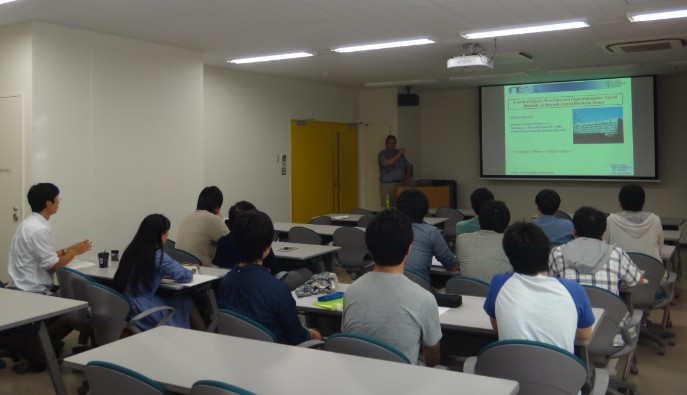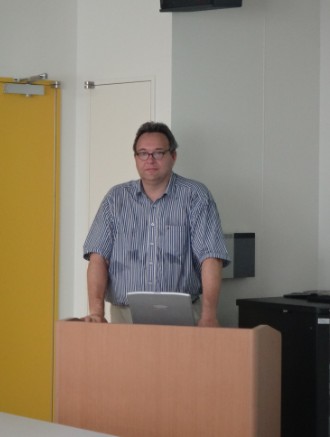The 70th ROEL Lecture Session was held in Conference room on 4th floor in Research Center for Organic Electronics on October 7. We invited Prof. Derck Schlettwein from Justus-Liebig-University Giessen as a guest speaker, and he gave a lecture entitled "Growth of organic thin films and organic/inorganic hybrid materials on microstructured electrode arrays."
Many researchers and students attended to the lecture and the 70th ROEL Lecture Session finished in success.
 Conference room during the lecture |  Prof. Derck Schlettwein, Institute of Applied Physics and Laboratory of Materials Research, Justus-Liebig-University Giessen |












